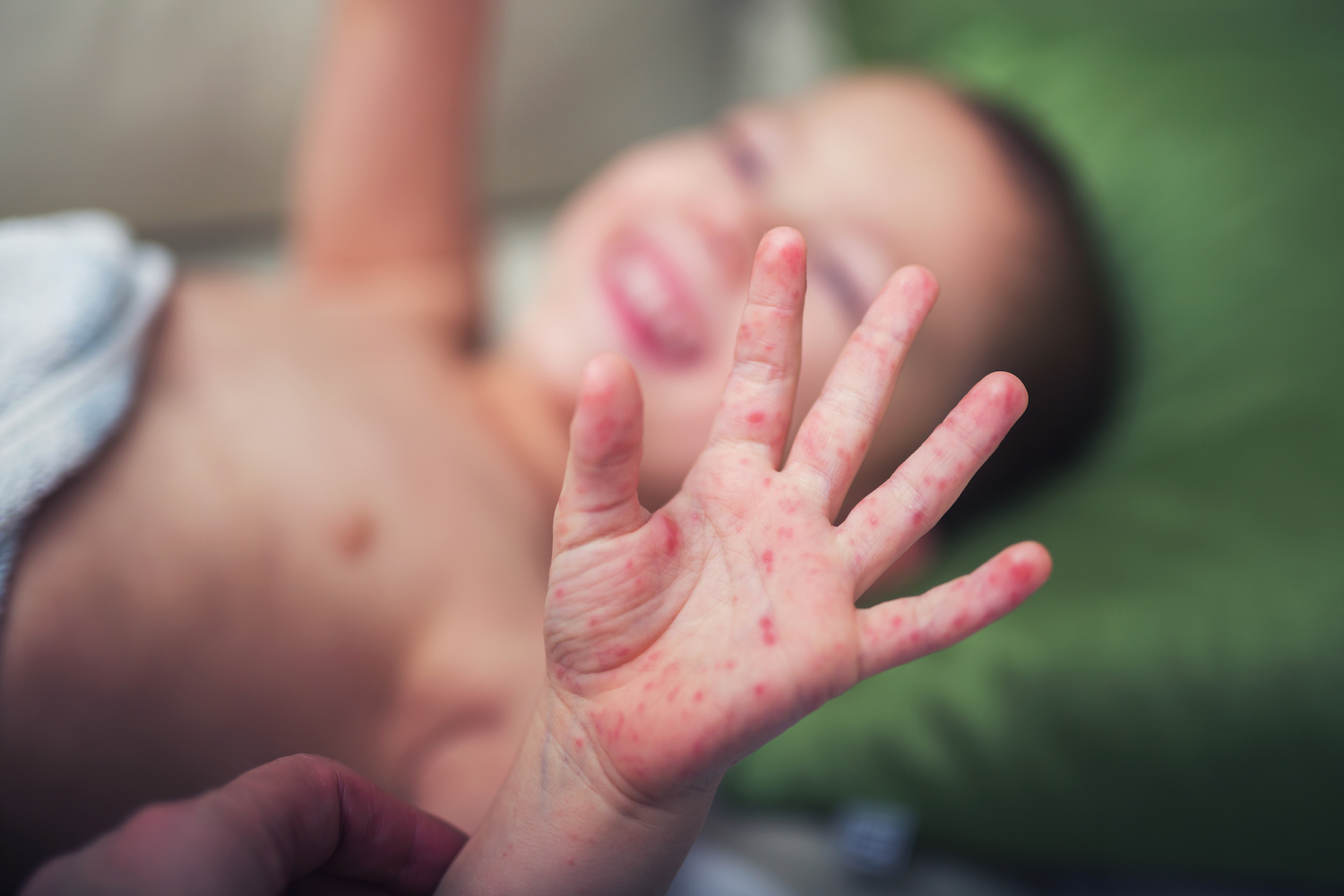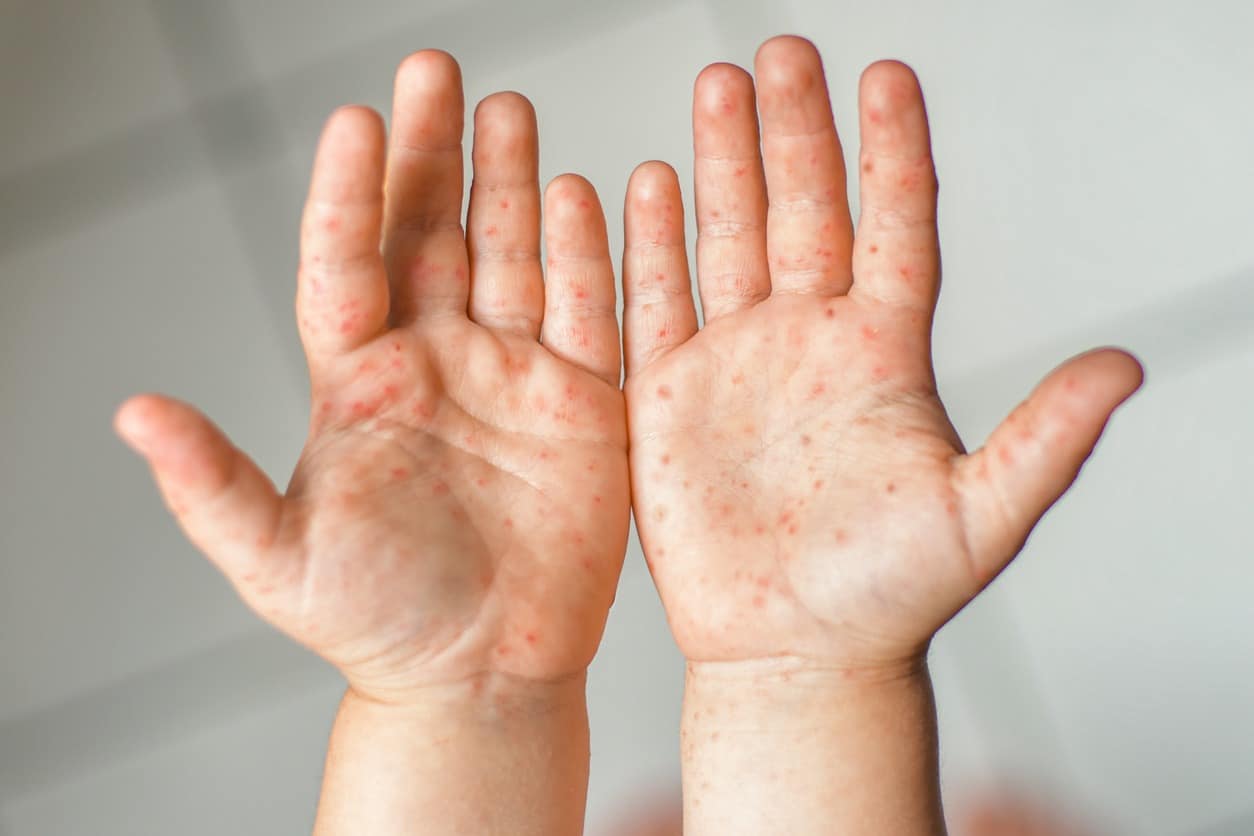Overview of Hand, Foot, and Mouth Disease (HFMD)

Hand foot and mouth disease – Hand, foot, and mouth disease (HFMD) is a common infectious disease caused by viruses, primarily the coxsackievirus. It primarily affects infants and young children, characterized by fever, sores in the mouth, and a rash on the hands and feet.
Causes
HFMD is caused by various strains of enteroviruses, with coxsackievirus A16 and enterovirus 71 being the most common. These viruses spread through contact with respiratory droplets, saliva, or feces of an infected person.
Symptoms
Symptoms of HFMD typically appear 3-6 days after exposure to the virus. They may include:
- Fever
- Sore throat
- Loss of appetite
- Painful mouth ulcers
- Rash on the palms of the hands and soles of the feet, as well as buttocks
Transmission
HFMD is highly contagious and can spread through:
- Contact with respiratory droplets
- Sharing contaminated objects (e.g., toys, utensils)
- Contact with feces or saliva of an infected person
Prevention and Control Measures for HFMD: Hand Foot And Mouth Disease

Preventing and controlling hand, foot, and mouth disease (HFMD) is essential to protect individuals, particularly young children, from the infection. Effective hygiene practices, vaccination, and outbreak management guidelines play a crucial role in reducing the spread of HFMD.
Effective Hygiene Practices, Hand foot and mouth disease
- Frequent handwashing: Regular handwashing with soap and water is the most effective way to prevent the spread of HFMD. Hands should be washed thoroughly before eating, after using the toilet, and after coming into contact with an infected person or contaminated surfaces.
- Disinfecting surfaces: Frequently touched surfaces, such as doorknobs, countertops, and toys, should be regularly disinfected with a household disinfectant to eliminate the virus.
- Avoiding contact with infected individuals: Individuals who are infected with HFMD should be isolated to prevent spreading the virus to others. Avoid close contact with infected individuals, especially young children who are more susceptible to the infection.
Vaccination
Vaccines are available to prevent HFMD. The vaccine is recommended for children between the ages of 6 months and 5 years. The vaccine is safe and effective in preventing HFMD and its complications.
Outbreak Management in Schools and Childcare Facilities
In the event of an HFMD outbreak in schools or childcare facilities, it is important to implement the following measures to contain the spread of the infection:
- Early detection and isolation: Infected individuals should be identified and isolated immediately to prevent further transmission.
- Enhanced cleaning and disinfection: Thorough cleaning and disinfection of the facility, including surfaces, toys, and equipment, should be carried out regularly.
- Exclusion of infected individuals: Infected individuals should be excluded from attending the facility until they are no longer contagious.
- Education and awareness: Parents and staff should be educated about HFMD, its symptoms, and preventive measures.
Hand, foot, and mouth disease is a common childhood illness that can cause fever, sore throat, and a rash on the hands, feet, and mouth. The virus that causes hand, foot, and mouth disease is spread through contact with infected saliva or feces.
While there is no specific treatment for hand, foot, and mouth disease, most children recover within a few days. In other news, the upcoming NATO summit 2024 will bring together world leaders to discuss global security issues. As the world continues to grapple with the challenges of hand, foot, and mouth disease and other infectious diseases, international cooperation is essential to finding solutions.
The recent outbreak of hand, foot, and mouth disease has highlighted the importance of global cooperation in addressing public health emergencies. Just as the NATO summit brought together leaders to discuss collective security, so too must we work together to combat infectious diseases that know no borders.
By sharing information, coordinating resources, and developing effective vaccines, we can protect our communities from the devastating impact of these outbreaks.